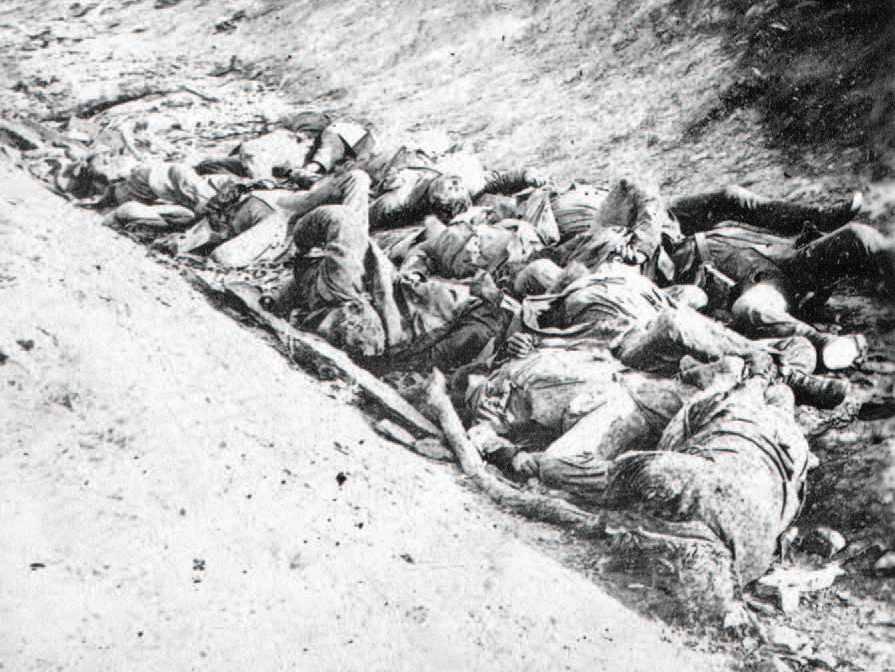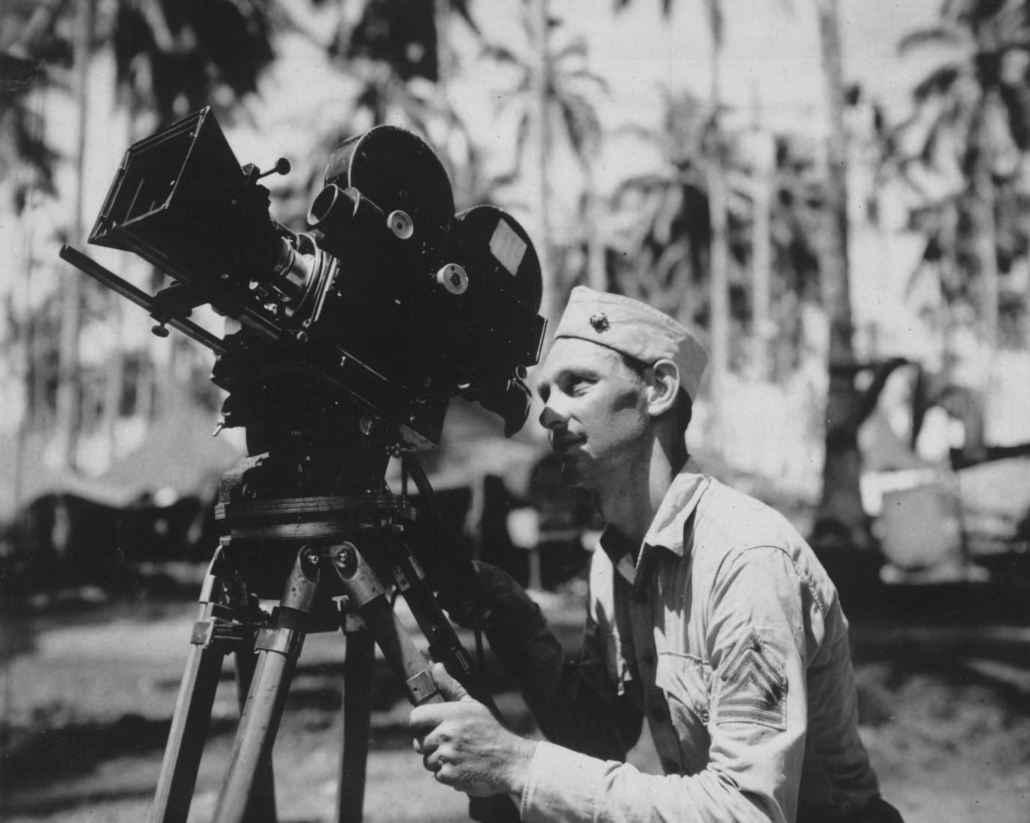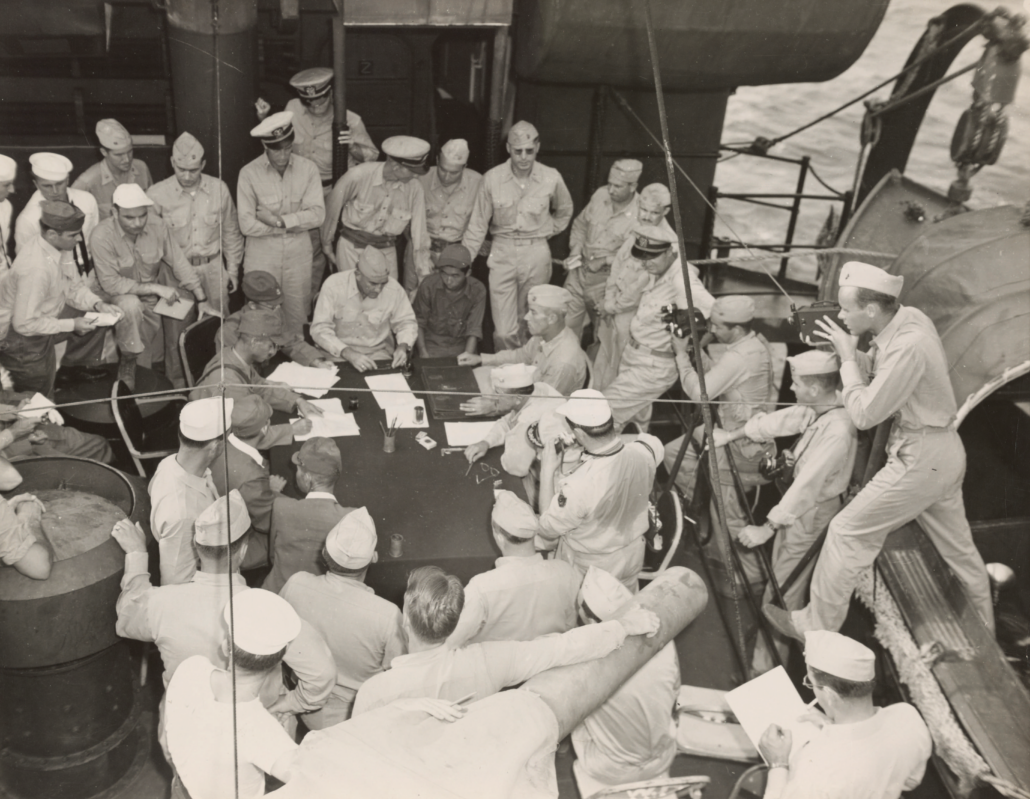
Blurred Boundaries: The Front Lines and The Homefront
By: Michael Jerome PlunkettPosted on December 15, 2023
On Oct. 6, 1862, The New York Times ran a short article wedged in the corner of a page in their daily paper titled “Antietam Reproduced.” The Battle of Antietam had occurred a few weeks before and had resulted in the worst casualty numbers the war had seen thus far. It would be the bloodiest single day of combat for the U.S. military until the attack on Pearl Harbor in 1941. Photographer Alexander Gardner and his assistants rushed to Sharpsburg, Md., to capture the aftermath of the conflict. The photographs they produced showed the state of the battlefield before the Confederate dead were removed. Soon afterward, Mathew Brady, a photographer who worked closely with Gardner during the war, displayed these photographs for public viewing in his personal studio in New York City. “If our readers wish to know the horrors of the battle-field,” said The New York Times, “let them go to Brady’s Gallery, and see the fearful reproductions which he has on exhibition, and for sale.”
This marked a major step forward in the way the civilian population interacted with the Civil War. For possibly the first time, the public was exposed to “all the literal repulsiveness of [the] nature” of combat, and they witnessed “the naked corpses of our dead soldiers side by side in the quiet impassiveness of rest. Blackened faces, distorted features, expressions most agonizing, and details of absolute verity.” The article goes on to praise the enterprise, perseverance and courage of these artists, noting that the photographs could “teach us a lesson which it is well for us to learn.” However, it is left up to the reader to decide what conclusion should be drawn from these gruesome images—from the effects of combat on the human body. But given that the anonymous author wasn’t writing from one of the bloody campaigns in the Shenandoah Valley or from the ranks of the Army of the Potomac, it is safe to assume the collective “us” he refers to is the civilian population far from the front lines. He drives this point home when he pairs the images of the soldiers killed in action with that of the throngs of people walking down Broadway in New York City. The author imagines that “they would jostle less carelessly down the great thoroughfare, saunter less at their ease, were a few dripping bodies fresh from the field, laid along the pavement.” This is his attempt to force a collision between the battlefield and the homefront in the mind of the reader, to merge the two spheres and bring the horrors of war to the civilian mind.
The term “homefront” is relatively new, first appearing around World War I in various bond drive literature and other campaigns that encouraged civilians to support the war effort and the courageous men who were fighting at the front. It grew in popularity during World War II when similar sentiments helped drive industry to support war efforts while much of the manpower was fighting abroad. But it is a concept that feels, at best, tenuous in the 21st century. If there ever was a distinction between the homefront and the front lines of war, that chasm appears to be shrinking—or may not have ever existed in the first place. This blurring of boundaries is in large part due to the proliferation of photography, videography and social media in our increasingly digital age.
Photography occupies a unique place in military culture. We still rely on it heavily to reinforce our ideal of what the military should be. Anyone who has been through Parris Island in the last 30 years knows this phenomenon all too well. There are photographers at every major training event, from the moment you step off the bus and onto the yellow footprints to the eagle, globe and anchor ceremony when you are first given the title of Marine. The quintessential dress blues photo taken near the end of boot camp doesn’t include the infamous blue coat at all but rather a modified vest (more bulletproof vest than dress coat) that is quickly switched from recruit to recruit as they move in front of the camera, assembly line style. Outside of the military, there are any number of websites, that offer full-size cardboard cutout photographs to temporarily take the place of your loved one while they are deployed abroad. For an additional $20, you can add a customized text bubble. This style of photography is in some ways a far cry from Gardner’s wet plates of bloated corpses on major battlefields of the American Civil War. Yet in other ways, it is the exact type of evolution one might expect as photography became more accessible to the masses, as well as easier and more financially reasonable to produce.
Photography has long been an integral part of the military experience in war and garrison. From the moment cameras became compact enough to be transported, they found their way onto the battlefields. Roger Fenton documented the Crimean War in 1855, less than 30 years after the first still photo was captured by Joseph Nicéphore Niépce using a sliding wooden box camera. Alexander Gardner was just one of several photographers to document the American Civil War less than 10 years later. While Fenton’s work was largely relegated to the rear and to scenic portraits of battlefields, the American Civil War offered ample opportunities to capture the grisly effects of combat. In her book on Mathew Brady, Mary Panzer remarked that one of the unique features of Brady’s work as a photographer was that his “photographs allowed viewers to see the war through the eyes of their loved ones. Gardner’s, by contrast, revealed the world that those soldiers would never see. Even as early as 1860, it was clear that Brady’s gallery contributed to the changed understanding of American heroes and history.” Still, it wasn’t until World War II that photographers attempted true combat photography in earnest.
Photographers such as Robert Capa landed on the beaches of Normandy with American forces and took photos as bullets ripped past him. These same photos were replicated in painstaking detail for the opening sequence of Steven Spielberg’s 1998 film “Saving Private Ryan,” which attests to the magnitude a series of photographs can have on the collective conscience of future generations.
And it wasn’t until the Vietnam War that civilians began to experience something closer to the truth during war. The telegraph gave way to the phone, which gave way to cable news, and by the time of American involvement in Vietnam, civilians at home were witnessing the war from their living rooms, night after night, year after year. According to the Library of Congress, 9% of households in 1950 owned a television. That number skyrocketed to 90% by the mid-1960s. The rapid expansion of television ownership in the United States meant that the vast majority of the population had access to nightly reports from the war in Vietnam. This jump forward in communication brought about the abrupt realization that the distinction between the homefront and the front lines of combat had been punctured.
This advancement coincides with another major milestone in combat photography. For perhaps the first time in history, iconic photos of spontaneous moments in the war were exactly that: spontaneous. Whereas public movie theaters had shown carefully orchestrated propaganda reels during World War II, American citizens were witnessing the war in their private spaces in a way that hadn’t happened before. This advancement played a major role in shaping the public perception of the conflict. It is not difficult to see the ubiquitous smartphone as an extension of a loved one’s eyes in the ever-increasing digital age, especially when considering the events of Afghanistan and the United States’ withdrawal. Obviously, the real, physical dangers will always pose their most immediate threat to those located on the front lines of the action. But the distinction between the two has become muddled and blurred in a way that will change the way we see war.


A similar and wider-reaching parallel can be made between smartphone ownership and social media usage in the 21st century. According to the Pew Research Center, 85% of Americans own a smartphone, which has jumped from 35% less than 10 years ago. Seventy-two percent of Americans use some type of social media, which has grown from 5% when they first began tracking this figure in 2005. These figures reflect a broad population that is using this technology daily. It indicates a deep saturation that affects how we witness the world.
Author Susan Sontag viewed photography as the most democratic of all the arts. In her estimation, “photography is the only major art in which professional training and years of experience do not confer an insuperable advantage over the untrained and inexperienced.” The proliferation of social media use only makes this idea truer. Censorship by these various applications remains a contested and ongoing conversation, but it stands to reason that it has never been easier for a single individual to voice an opinion or broadcast an event. Sontag wrote that “there is a peculiar heroism abroad in the world since the invention of cameras: the heroism of vision. Photography opened up a new model of freelance activity—allowing each person to display a certain unique, avid sensibility.”
This unique sensibility she describes has never been more acutely felt in the mind of the American public than with the recent events of the drawdown in Afghanistan. It has only increased in the intervening decades between Vietnam and the global war on terror. Individuals now have the ability to broadcast instantly without the backing of any major network or government. There is a colossal amount of power in this. We are no longer bound by major network corporations or publications. The gatekeepers have all been removed.
In August of 2021, the United States ended its 20-year war in the Middle East in an event that was watched in real-time all over the world. The poorly executed exit resulted in mass confusion and hysteria. There were many casualties in the course of several days, including many of our allies who risked their own lives to help the United States. The Taliban followed closely on the heels of the U.S. military and took back cities in hours that had taken U.S. forces years to capture. Anyone with a stable Wi-Fi connection could watch in real-time as overcrowded airplanes took off from the airport in Kabul, dropping Afghan citizens clinging to the outside of the aircraft to their deaths. The parallels to the photographs of people falling from the World Trade Center during the Sept. 11 attacks were remarked on ad nauseam, as were the chilling similarities to photos of the fall of Saigon in 1975 which, when placed side by side, look almost identical.
This collective reaction suggests that the compiled recorded history of war has had a lasting effect on the American psyche. It is no longer possible to fully separate the horrors of the front lines from the safety of the homefront. The idea that there was ever any real separation was probably closer to an illusion, one that we have collectively engaged in for the last century. What we are experiencing today in the hyper-realistic and immediate realm of social media has been a long time coming. When one watches the footage captured in Afghanistan on smartphones held by everyday citizens and noncombatant civilians, it is hard to think back to a more fully realized, virtual viewing gallery like the one Mathew Brady established during his career. Of course, those who are physically separated from the battlefield, whether it be by hundreds of miles or large bodies of water, will always be safe in the physical sense. But it stands to reason that bearing witness, however distant, is a form of participation. If we are participants, we are in some way complicit.
There’s a moment in Jess Walter’s novel “The Zero,” published in 2006, in which a New York Police Department detective named Paul who responded to the World Trade Center during the Sept. 11 attacks remarks, “Sometimes I wish we’d just gone to a bar that morning and watched the whole thing on CNN. You know what I mean? I envy people who watched it on TV. They got to see the whole thing. People ask me what it was like and I honestly don’t know. Sometimes, I think the people who watched it on TV saw more than we did. It’s like, the further away you were from this thing, the more sense it made. Hell, I still feel like I have no idea what even happened. No matter how many times I tell the story, it still makes no sense to me. You know?” Paul feels unable to accurately process what really happened to him, with the wider implication that somehow the events captured from a distance are more real than having been there in the moment itself.
This moment lends even greater weight to the idea of media and the rapid transfer of this information holding more validity in the collective American conscience because of its ability to spread a particular narrative to a wide audience. It is a scene that perfectly captures what French philosopher Jean Baudrillard refers to as “the image as simulacra,” wherein the representation of reality (e.g., news footage of the terrorist attacks) contains more truth than having experienced the event in person—and therefore becomes reality. Social media use is only going to continue to grow and, with it, the responsibility for that usage. We can no longer rest on the idea of being on a homefront while we witness the events of war as they occur in the palms of our hands.
The likelihood of increased conflict abroad has only grown since the withdrawal of American forces from Afghanistan. Less than a year after people witnessed the chaos and horror at Hamid Karzai International Airport, they were able to witness actual trench warfare unlike anything that has been seen since WW I from footage captured on GoPro cameras mounted on the helmets of Ukrainian soldiers and Western volunteers. In October 2023, I watched one independent journalist livestream incoming rockets from Gaza as convoys of Israel Defense Forces troops passed him along a highway in Israel. He remarked on how he was hoping to capture as many interviews as possible within the narrow time constraint he had for being on the ground in country. He was using paid time off from his full-time job as a special ed teacher to be there. The era of distinct, easily identifiable divides between the homefront and the front lines is a thing of the past if it ever really existed at all. In the book “On Photography,” Sontag likened the camera to a firearm, writing, “one that’s as automated as possible, ready to spring.” If the camera is a firearm, then social media is a nuclear warhead. With growing instability and conflict on the rise all over the world, civilians will have to reckon with whether their voyeurism is just benign spectatorship or something closer to a type of participation that we are only just beginning to understand.
Author’s bio: Michael Jerome Plunkett is a writer from Long Island. He served in the Marine Corps, and after working in the financial industry for Fidelity Investments and Morgan Stanley for several years, began pursuing writing as a career. He leads the Patrol Base Abbate Book Club and is the host of the LitWar Podcast.




